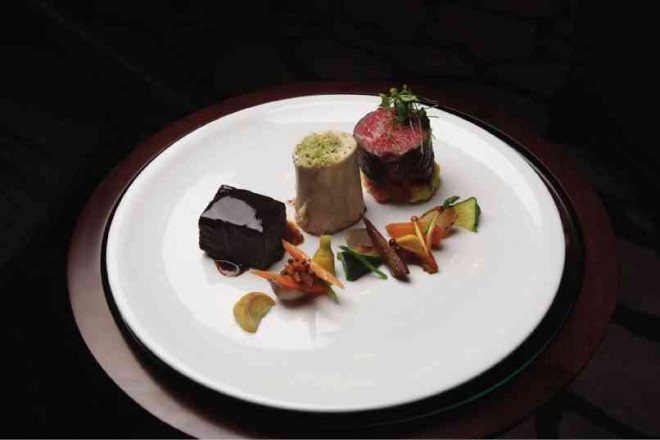
It looked like a setting for a romantic Valentine evening or a festive New Year’s Eve. That was what came to mind as we stepped onto the helipad of the Sofitel Philippine Plaza where a dinner was being hosted with Bordeaux’s Chateau Palmer wines.
Earlier that afternoon, there was a tasting at the Cheese Room of Sofitel’s Spiral. Damien Grelat, Chateau Palmer export director for Asia-Pacific, and Jean Philippe Guillot of AWC, Palmer wines distributor, introduced the wine in the context of its history, how climate affects the grapes, and the changes in Bordeaux wine-making.
When you have all that information while sipping, it makes the wine more “full-bodied,” in more ways than one.
For instance, the English name attached to the French word “chateau” invites inquiry. It is said that Charles Palmer, a general in the British Army, bought the winery from the Gascq family in 1814, and built the beautiful chateau that still stands there.
This was on instruction of the Duke of Wellington who defeated Napoleon Bonaparte at Waterloo and who may have wanted to add a winery to complete his victory. Chateau Palmer enjoyed high sales in England at a time when red Bordeaux was known as claret.
The winery changed hands several times, its fortunes affected by mildew infestations, wars and the collapse of economies. Today, Chateau Palmer is managed by Thomas Duroux who introduced the changes we were about to taste.
‘Alter Ego’
Because Palmer wines were consumed by the upper classes, even if considered “third growth” compared to “first growth” Margaux—a distinction by the AOC (appellation d’origine controlee)—they were aged for decades and priced exorbitantly.
Duroux decided to produce wines that sort of buck the system. The result is Alter Ego, wines that can be imbibed young and in a different style—compared to music, “Palmer is a classic while Alter Ego is jazz.”
Alter Ego is more attuned to today’s younger, noncollector drinker who wants to enjoy high-quality wines for less than the price of a classic Bordeaux.
More than making new wines, perhaps the biggest change Duroux has done was to incorporate modern wine-making techniques and adopt biodynamic farming to the entire Palmer holdings.
All these made for a more interesting tasting, apart from the good cheeses that were served with every glass.
Dinner with a view
From Sofitel’s ground floor, we ascended to the helipad where it was time to pair Palmer wines with food planned by chef Bettina Arguelles and executed by her staff.
The first course was an amuse bouche of corn crème brûleé with duck prosciutto kept chilled in a bowl of ice.
There was also a cold soup, a pea velouté with venison loin and pistachio dust that had Arguelles nervous about how it would be received by guests.
She didn’t have to worry because, even with the windy condition, we were kept a bit warm by an Alter Ego 2005, a good vintage in spite of a drought that plagued Bordeaux that year.
An egg ravioli filled with spinach ricotta, pumpkin, pancetta and a butter sauce mixed with sage came with the wine mixed with syrah, Chateau Palmer Ermitage 2007. The classified vin de table made one wish that all such wines would taste as smooth and rich.
The heavy stuff came next— Wagyu steak and braised shortribs with bone marrow. And here the classic appeared, a Chateau Palmer 1998.
The cheese course was a bit heavy, a small ball of brie with port wine honey and macadamia brittle. Then came dessert, a sweet ending of deconstructed strawberry shortcake where the elements came in separate pieces.
The dinner was capped with a Chateau Palmer 2005, a salute to the winemaker who salvaged a bad harvest—because of the drought in Bordeaux—into an outstanding vintage.
The experience of having dinner with fine wines on a helipad setting made us linger a bit, and wonder how much it would cost to do something similar there.
Someone quipped, “Sky’s the limit!”
E-mail pinoyfood04@yahoo.com